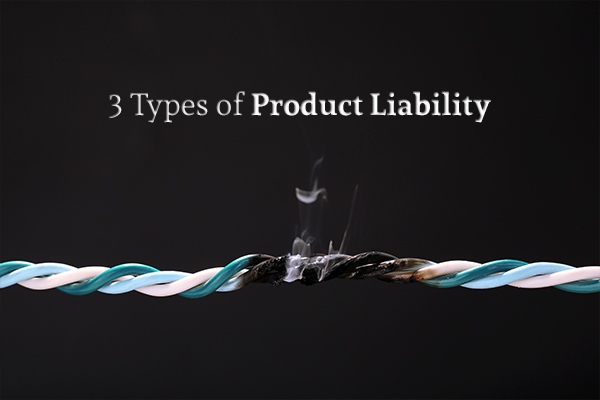
Accidents resulting from a defective product can be jarring. Not only are you left dealing with hospital bills and damages, but you may be conflicted on whether to bring a lawsuit against the manufacturer or not. There are three categories of product liability that your particular case can fall under: design defect, manufacturing defect, or failure to warn. Understanding these categories can help you feel more confident about your claim. Here is what you need to know about each kind of product liability:
Design Defects
Design defect product liability claims are based on the assertion that the product was made according to design, but there was a flaw in the design. This type of product liability is typically easier to show or prove because it isn’t just one product that was flawed but an entire line of products. The most common types of design defects that have occurred in recent years are as follows:
- Defects in a vehicle, either with the airbag prematurely exploding or with the car having a tendency to flip over due to being too top heavy
- Defects in a line of electric blankets that electrocuted the user when they were turned on
- Defects in a line of cell phone batteries that resulted in them exploding when overheated
Another example of a product liability case going to court is the 1970 Ford Pinto case. Rear-end collisions to the Pinto – even at slow speeds – would cause the fuel to ignite and the car to burst into flames. It was discovered that proper collision testing was not conducted until several months after the car had already been on the market. Twenty-seven people were killed and several others were injured.
Proving Design Defect Product Liability
When it comes to taking a design defect product liability case to court, there are a few things you need to know: 1) there has to be evidence that there was a defect in the product that caused the accident, and 2) it needs to be proven that the accident from the design defect resulted in injury. In other words, if you use a product correctly but it’s designed poorly and therefore injures you, then you may have a design defect product liability case on your hands.
When it comes to design defects with cars that become apparent in an accident, this can be a tricky situation to prove. This is why you need an experienced team of lawyers behind you to help you get the compensation you deserve and gather the right evidence to show that your injury was caused by the defect in the vehicle.
Manufacturing Defects
Manufacturing defect product liability claims occur when the product is designed safely, but it is not created or assembled correctly during the manufacturing process. This is usually the result of the following conditions:
- A machine that doesn’t produce parts up to the proper specifications
- A piece of machinery breaking and releasing metal shards into the product
- Workers not following the correct assembly instructions
One of the most well-known manufacturing defect product liability cases involved Blue Bell in 2015. The equipment that Blue Bell used to manufacture their ice cream got tainted with listeria, leading to their ice cream getting tainted. Ten people got sick due to this listeria outbreak, three of whom eventually died.
Proving Manufacturing Defect Product Liability
To prove that you are dealing with a manufacturing defect, you have to be able to show evidence that your accident was caused by the defect and not from your own actions. For example, if a bicycle was made without the brakes being properly connected and you get into an accident, it needs to be shown that the lack of brakes caused the accident and not poor riding skills.
Failure to Warn
In a failure to warn product liability case, the manufacturer failed to give proper warning or provide proper labeling about the dangers of a product. This may include:
- A kid’s toy with small pieces that is not labeled to have choking hazards
- Medication that does not list all the side effects
- A chemical that does not warn about the dangers of breathing it in
A failure to warn case was brought against Glade & Grove Supply, Inc. in the 1990’s. The plaintiff claimed that the company did not provide adequate warning that a tractor should have a lockout pin in place when traveling at high speeds. This failure to warn ultimately led to the death of Daniel Brown.
Proving Failure to Warn Product Liability
In a failure to warn case, the plaintiff must be able to prove that a warning label lacked proper warning about the dangers of the product. Even if the manufacturer did attempt to warn about an inherent danger of the product, confusing wording or improper label placement may lead to the case being ruled in the plaintiff’s favor. The plaintiff also must prove that the failure to warn caused their injuries.
The Team That Has Your Back
If you have been injured by a defective product, the team at the Hernandez Law Group, P.C. can help. Juan Hernandez is one of the few board-certified personal injury attorneys in Texas, so he is highly qualified to take on your case. Our team will fight to get you the compensation you deserve. Contact the Hernandez Law Group, P.C. today for a free, no-obligation consultation or for more information on product liability cases.
